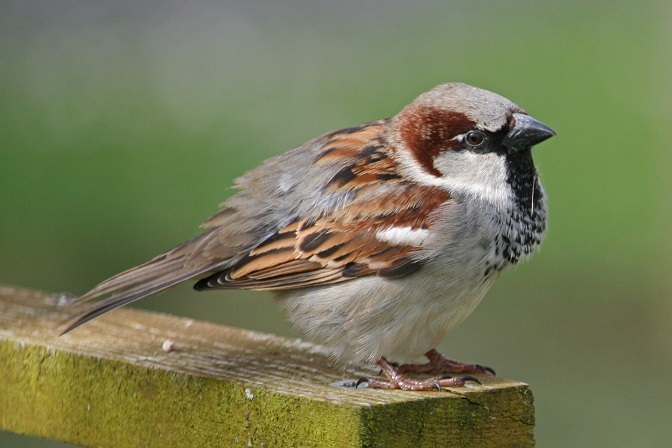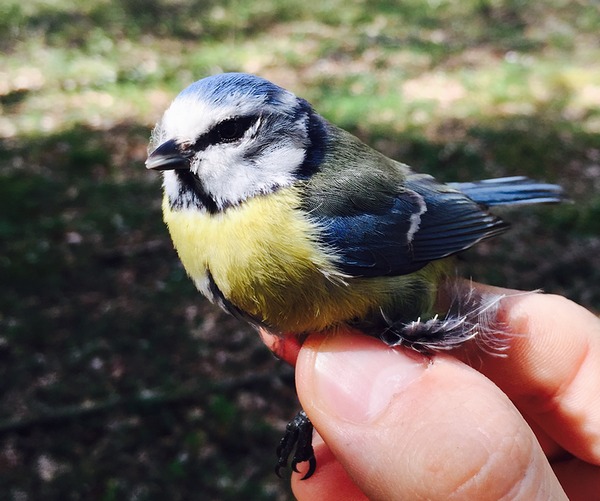
Colours are one of the most basic means of communication between organisms on our planet. In their research, JU scientists are investigating the mechanisms which govern and regulate the colour intensity of birds' feathers.
In nature, colours are used for various purposes. They can serve as a warning (which is a technique called "aposematism", employed by wasps, poison dart frogs, and venomous snakes, just to name a few), an indicator of offspring's health (so that the parents know which of their children should be prioritised when it comes to feeding and protection), a camouflage technique (chameleons and squids blend perfectly into their environment, cuckoos target nests of birds with eggs similar to their own), and, last not least, an important tool for finding sexual partners, where one of them, generally the male, will "advertise" its worth in hopes of convincing the other to mate.
Every year, leading biological journals publish hundreds of articles devoted to colours and their role in nature. It's one of the hottest topics in evolutionary biology, particularly when it comes to animals such as birds or butterflies, since they exhibit the greatest colour diversity.
Why do we see colours?
When looking at the results of various researches on colours, it may seem that it's really hard to come up with new ideas about this topic. But nothing could be further from the truth: despite all that we know about colours, there is still much to be learned about the mechanisms responsible for their creation. In most cases, we're not exactly sure what's responsible for a particular colour or hue. Usually, colours are produced thanks to pigments, which absorb different wavelengths of light while letting some of the white light pass through – it appears to us as a colour. We know, for instance, that most yellow, red and orange hues are produced when the animal's tissue contains large amounts of carotenoid substances, closely related to carotene found in carrots, or yellow xanthophylls, found in autumn leaves. Similarly, black, brown and reddish brown colours that we can see in the plumage of pheasants, owls, or other birds of prey, are caused by pheomelanin (reddish brown) and eumelanin (black), two complex pigments which are also present in animal fur as well as human hair and irises.
 Substances which produce colour are not just pigments. Many of them are important for other reasons as well. For example, carotenoids play a crucial role in helping the immune system. They also fight off free radicals, i.e. aggressive particles which are detrimental to the organism's tissue. So, the question is: how do individual animals cope with distributing these valuable substances between colour production and other important tasks?
Substances which produce colour are not just pigments. Many of them are important for other reasons as well. For example, carotenoids play a crucial role in helping the immune system. They also fight off free radicals, i.e. aggressive particles which are detrimental to the organism's tissue. So, the question is: how do individual animals cope with distributing these valuable substances between colour production and other important tasks?
"Our latest, innovative study at the JU Institute of Environmental Sciences is aimed at addressing this issue", said Dr Szymon Drobniak, currently engaged in researching the mechanisms of colour production in bird plumage. "It's not easy to study colours. We can't just visually approximate them: every human being sees colours a little differently. Instead, we're going to use a spectrophotometer, a special device which allows for precise measurement of any object's colour. We'll be able to adequately measure the colour of feathers belonging to our two model bird specimens: the Eurasian blue tit and the sparrow", he added. Male sparrows have a prominent black patch (called a "bib" or "badge") on their throat, a sign of their attractiveness and status in the flock. The blue tit, on the other hand, has beautiful bright yellow feathers on its chest. The researchers will analyse the sparrow's plumage using an electron microscope to see how individual birds regulate their melanin distribution by diverting minuscule pigment granules, called melanosomes, to various parts of their feathers. On the other hand, the Eurasian blue tit's plumage colour is based on carotenoids: the feathers on its chest receive their bright yellow colour from a xanthophyll – lutein – which the birds extract from eaten caterpillars. The scientists will feed the birds with a specially prepared pigment containing stable carbon isotopes to determine the exact path that carotenoids take when travelling through their bodies. This way, they'll be able to tell how the regulation process works based on the bird's health.
Super sight
 But the Eurasian blue tits are not just yellow. Everyone who's seen them in their neighbourhood bird feeders knows very well that their heads, wings and tails are pristine sapphire blue. Or at least that's what it seems to us. In fact, the colour of their plumage is much more complex. It turns out that their feathers reflect large amounts of ultraviolet light, invisible to humans. They're not just blue – they're ultraviolet-blue! Birds can see this colour due to the fact that they have additional receptors in their eyes. While the human eye possesses three types of cone cells which can distinguish three types of colours (red, yellow-green and blue), the bird's eye has an additional fourth cone cell type, responsible for seeing violet and ultraviolet radiation. In short, they see much more than we do.
But the Eurasian blue tits are not just yellow. Everyone who's seen them in their neighbourhood bird feeders knows very well that their heads, wings and tails are pristine sapphire blue. Or at least that's what it seems to us. In fact, the colour of their plumage is much more complex. It turns out that their feathers reflect large amounts of ultraviolet light, invisible to humans. They're not just blue – they're ultraviolet-blue! Birds can see this colour due to the fact that they have additional receptors in their eyes. While the human eye possesses three types of cone cells which can distinguish three types of colours (red, yellow-green and blue), the bird's eye has an additional fourth cone cell type, responsible for seeing violet and ultraviolet radiation. In short, they see much more than we do.
The real mystery is: how do birds produce these additional colours? They are not based on any pigments – the substance which constitutes the blue tit's feathers is white. Their perceived colour is created thanks to light refraction caused by the feathers' spongy structure. This phenomenon is called "structural coloration", and is also present in butterflies. We don't know, however, how the animals manage to influence these colours and their intensity depending on their health. "While investigating this issue, we'll also use an electron microscope", stressed Dr Drobniak. "After we enhance the feathers' nanostructure several hundred thousand times, we'll be able to discern the elements responsible for colour changes registered by the spectrophotometer".
Who knows – maybe this research will lead to new types of sun-resistant paint? Such materials would be less susceptible to the bleaching effect of the sun's rays, since they would have a very different nanostructure from what we use now. "My annual bird watching in Swedish woods would then unexpectedly result in meaningful practical applications. So, now it's time to solve the mystery of bird colours – and it seems it may prove a more daunting task than we ever thought", said Dr Drobniak.
Eurasian blue tit photo by Dr Szymon Drobniak.
Original text: www.nauka.uj.edu.pl





